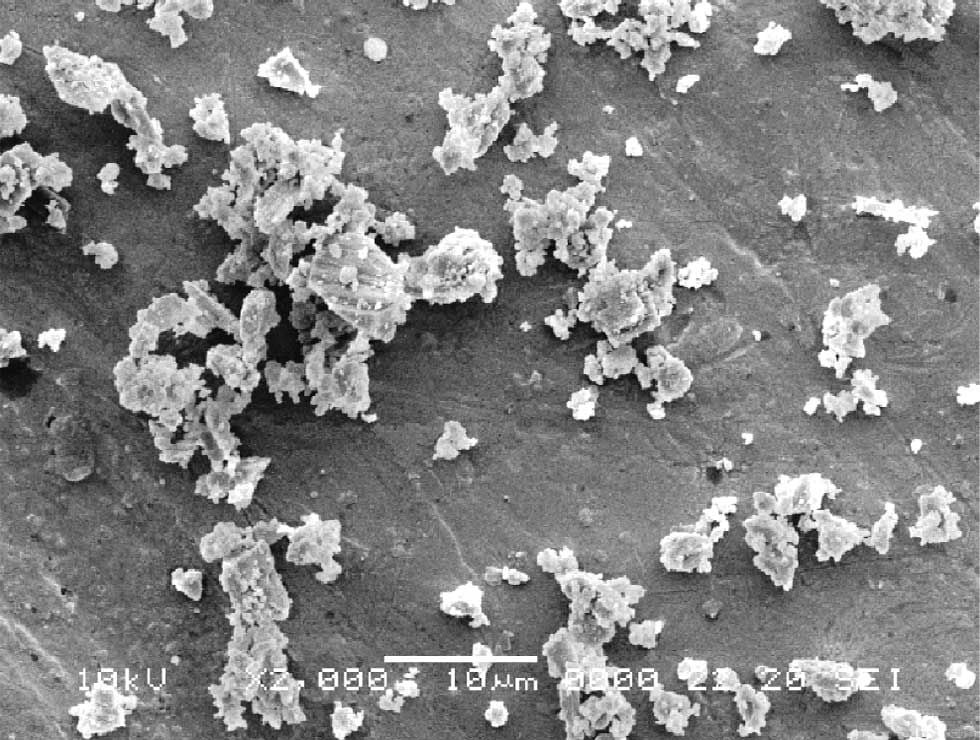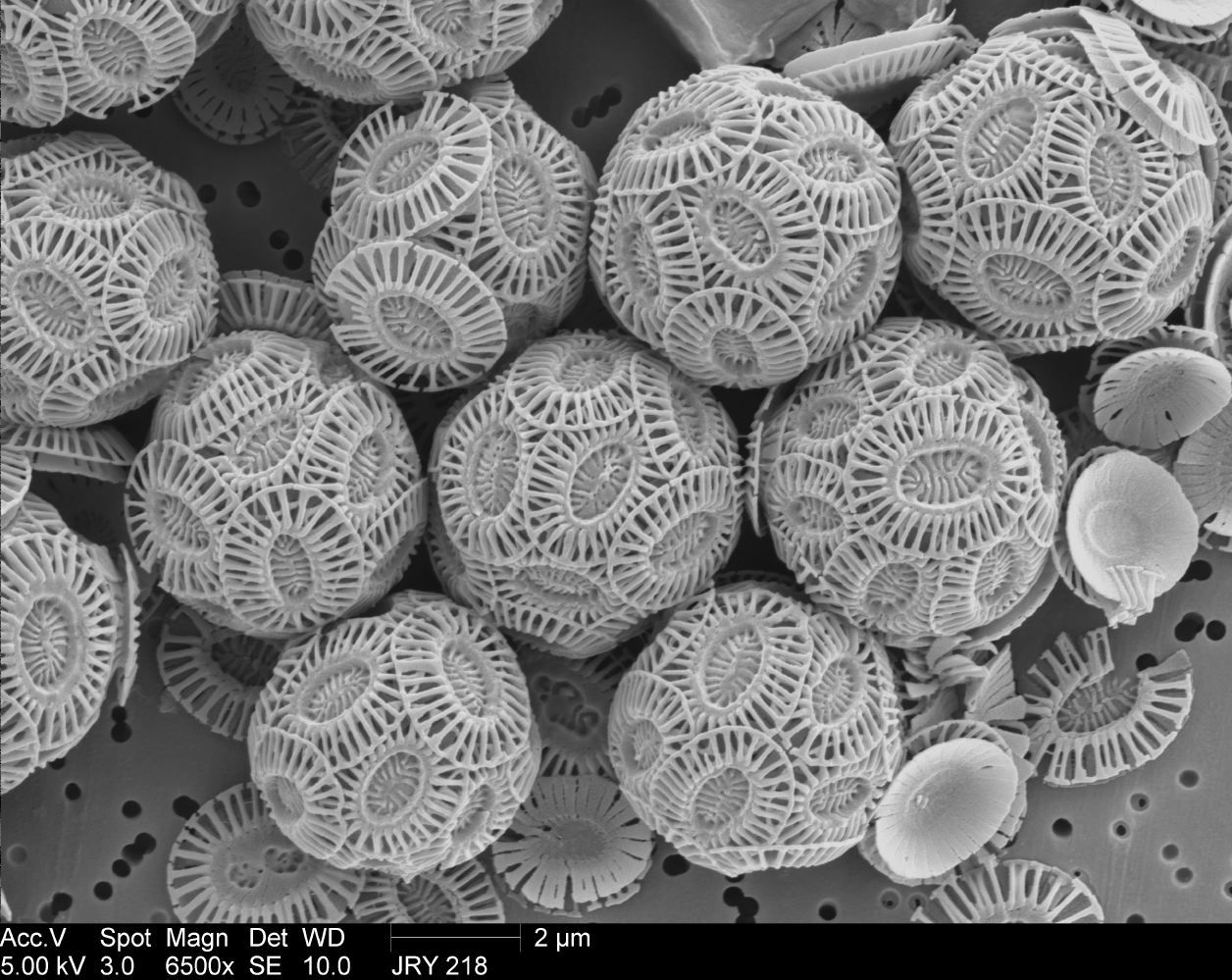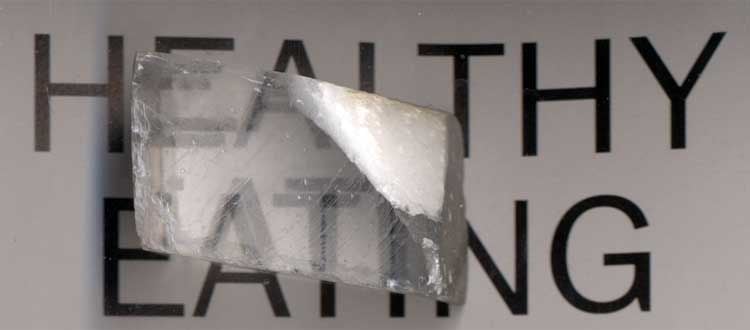Calcite (Chalk)—Types, History and Use in Oil Painting


Particles of calcite
Calcite is a naturally occurring calcium carbonate (CaO3) mineral in rocks such as chalk, limestone, and marble. These rocks are the primary sources of the extender pigment. Its whiteness, softness, and fine-grained nature make it an ideal white pigment, both abundant and easily processed. Chalk is relatively transparent in most paint media and is often used as an extender of other pigments and employed with animal glue as a ground for painting.

Calcite is obtained from limestone formed from sedimentary deposits of coccoliths—minute, rounded, calcareous platelets, numbers of which form the spherical shells of coccolithophores (single-celled algae) and which are arranged around them in a coccosphere.
Chalk, Marble, Limestone, and Calcite—What’s the Difference?
Chalk is a sedimentary carbonate rock, a form of limestone composed of the mineral calcite. Marble is a metamorphic rock composed of recrystallized carbonate minerals, most commonly calcite or dolomite. Limestone is a sedimentary carbonate rock often composed of the skeletal fragments of marine organisms such as coral, foraminifera, and mollusks. Its primary materials are the minerals calcite and aragonite, which are different crystal forms of calcium carbonate. Rocks, such as chalk, marble, and limestone, are mainly composed of the mineral calcite or other crystalline forms of calcium carbonate but can contain other minerals or chemicals.
A mineral is an element or a chemical compound usually crystalline and formed due to geological processes—part of mineralogical classifications.
Rocks are any unique combination of chemical composition, minerals, grain size, texture, or other distinguishing characteristics. There are three major types of rock: igneous rock, metamorphic rock, and sedimentary rock. Rocks are composed of minerals.
Whiting is another name for chalk, used in historical references of the high calcium deposits of chalk found in England, France, and Belgium.
History of Calcite in Art
Calcium carbonate, in various forms, has a long history in art. It has been recognized, for example, in Greek and Roman art. Its use in art since that time has been both persistent and widespread. In northern Europe, from medieval times, chalk was employed with animal glue to make the ground or preparation layer of paintings. Sometimes, later, lead white was mixed with the chalk to make it denser and whiter. Chalk was used as a white pigment with animal glue or other aqueous binders.

Single calcite crystals display an optical property called birefringence (double refraction). This strong birefringence causes objects viewed through a clear piece of calcite to appear doubled. At a wavelength of ~590 nm, calcite has ordinary and extraordinary refractive indices of 1.658 and 1.486, respectively.
Calcite has been used in oil painting, being added to colors, especially lead white, by such artists as Velázquez and Rembrandt. The transparency of chalk was desirable in some Dutch tonal landscapes of the seventeenth century.
Uses of Calcite in Paint
Calcium carbonate is commonly used with other pigments in oil paint because of its low refractive index and poor hiding power. However, linseed oil and chalk have long been used together to prepare putty. The transparency of chalk in oil makes it ideal for adding bulk to oil colors or affecting the consistency (rheology) of paint.
Calcium carbonate is often used as an extender pigment to reduce the cost of the paint. Its alternative names, such as chalk and whiting, are used in many formulations. An important use of calcium carbonate is in mixtures with titanium dioxide pigment to act as a spacer, keeping the titanium white particles spread apart and ensuring better efficiency in scattering light and increasing opacity. Calcium carbonate is often used to vary the gloss of powder coating materials, depending on the particle size used.
Variations of Calcite and their Effects on Paint
Calcium carbonate derived from different mineral sources behaves differently in paint. The material can be ground from limestone or marble, which is limestone that has undergone heat and pressure below the earth’s crust, or chalk, a light, soft structure material generally associated with the sedimentary deposition of the shells of such minute marine organisms as foraminifera, coccoliths, and rhabdoliths. The particle structure and chemical behavior of these variations of calcite all differ slightly.
The particle size and shape of calcite, regarding its behavior and performance in paint, are essential for several reasons. One is the viscosity of the paint, which is related to the volume occupied by the dispersed solids within the paint vehicle. In the case of particles that are not spherical, the “spherical equivalent” volume may be the maximum volume inscribed by the rotation of a particle. Because of this, a non-spherical particle may behave as if it occupies much more volume than it does.
Another consideration of the influence of particle size and shape on the behavior of paint is the surface area of the particle. The amount of paint binder a pigment requires to form a paste paint is called its oil absorption number. The greater the surface area of the particle, the more binder it demands to make into a paste or flowing paint. Synthetic (precipitated) calcium carbonate that consists of 0.05-micron needle-shaped particles has more surface area than the particles of ground limestone of the same size, which have simple structures resembling rhomboidal crystals. Because of the complex surface of the precipitated calcium carbonate, it will tend to scatter more light and appear more opaque than the ground limestone particles. However, this likely precipitated calcium carbonate will consume considerably more binder than ground limestone.
Selecting the correct type of calcite and considering particle size and shape, brightness, chemical constituents, and surface treatment are important factors when making paint or painting mediums.








